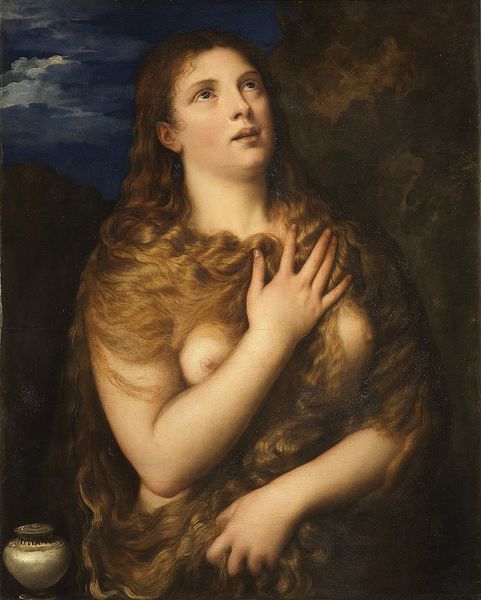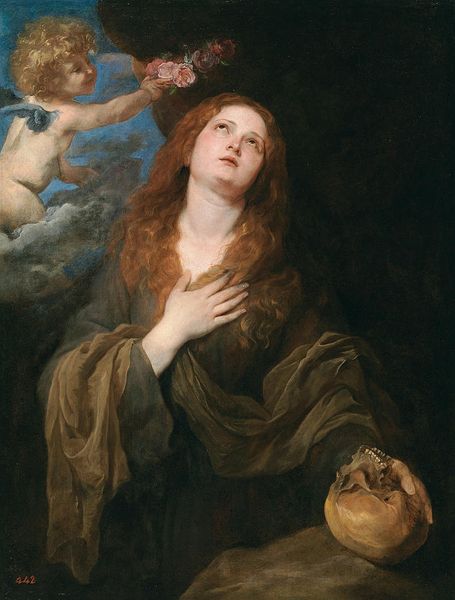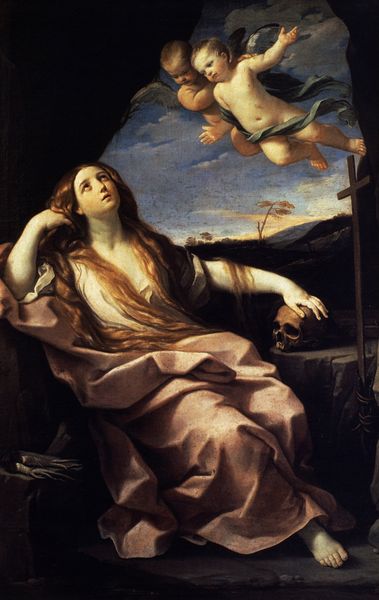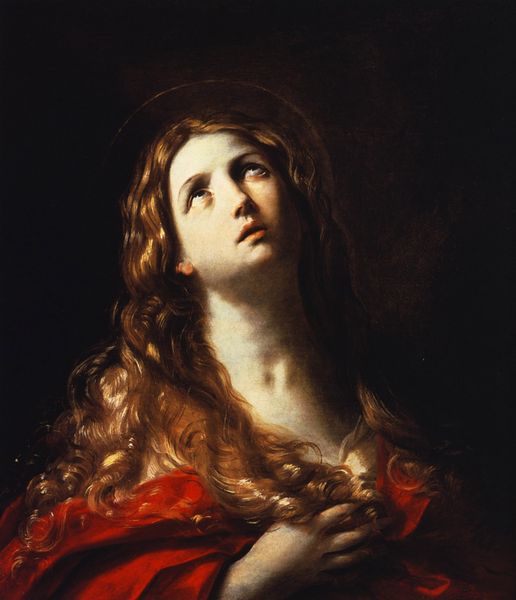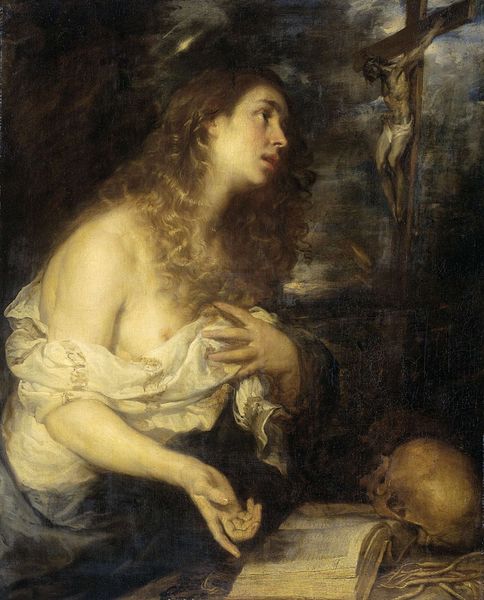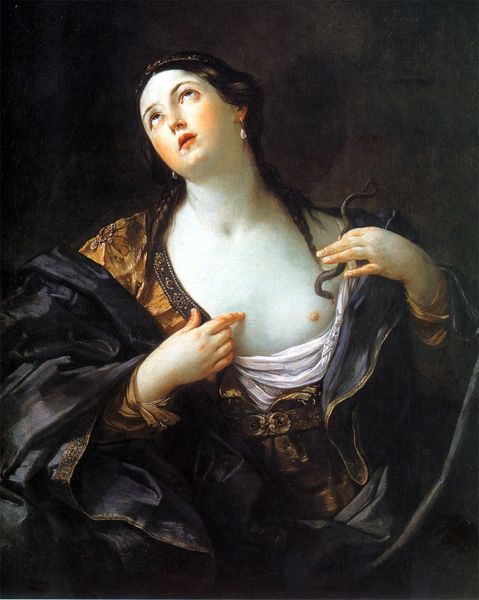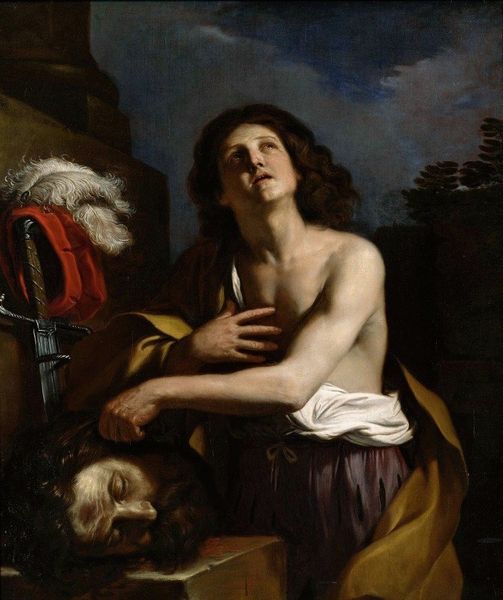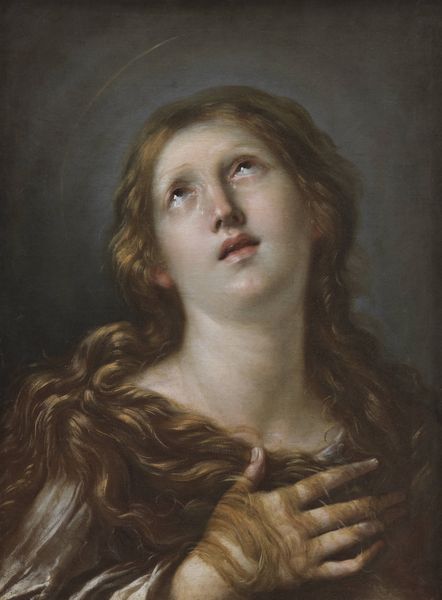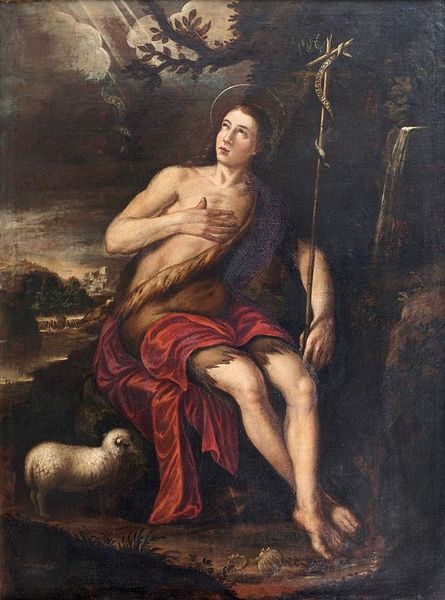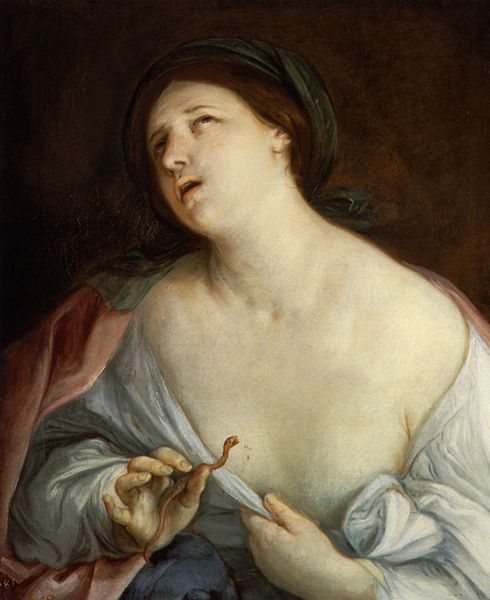
painting, oil-paint
#
portrait
#
high-renaissance
#
painting
#
oil-paint
#
mannerism
#
figuration
#
oil painting
#
christianity
#
history-painting
#
italian-renaissance
#
christ
Dimensions: 119 x 98 cm
Copyright: Public domain
Editor: Here we have Titian’s “Penitent St. Mary Magdalene” from 1565, an oil painting currently residing in the Hermitage Museum. The first thing that strikes me is the raw emotion in her upturned gaze – but also the slightly sensual presentation. How do you interpret this work? Curator: I see a carefully constructed narrative that speaks to the complex position of women, especially concerning sexuality and repentance in 16th-century society. Think about the male gaze present even within a religious context. What does it mean for Mary Magdalene to be depicted as beautiful, even alluring, while in supposed mourning? Editor: It's a bit contradictory, isn’t it? She's repenting, yet there's this undeniable beauty, bordering on sensuality, on display. Is it about power, maybe? Her acknowledging and accepting her beauty. Curator: Precisely! The painting becomes a site where religious contrition intersects with female representation, revealing underlying tensions. It can be interpreted through feminist theories—the male artist shaping the narrative of a female penitent. Do you notice how the skull and the book are at the bottom? How do you feel about the relationship of her body, positioned slightly above those symbols? Editor: It gives her power, because she towers over those mortality symbols. Is the piece, in essence, subtly questioning societal expectations and offering a more nuanced view of female figures in religious history? Curator: Exactly! By situating Mary Magdalene as both sinner and saint, Titian inadvertently opens a dialogue. It is not only about individual redemption but also broader discussions on how women’s stories are constructed and consumed within patriarchal structures. Editor: So, the painting challenges us to critically examine how female figures are framed and perceived in art history? Curator: Yes, and to consider the layers of power, representation, and societal expectations embedded within even the most seemingly straightforward religious scenes. Editor: I never would have considered all that. I’ll never see the painting in the same light again. Curator: Hopefully, it helps others also challenge these traditional paintings and ask how intersectional paradigms are influencing the interpretation of familiar works.
Comments
No comments
Be the first to comment and join the conversation on the ultimate creative platform.

